Posted By admin on December 13, 2021

Civilian Marksmanship Program (CMP) logo and link
By Ashley Brugnone, CMP Staff Writer
As part of its mission, the Civilian Marksmanship Program (CMP) has been dedicated to the development and longevity of youth shooting sports around the country. With several junior programs currently established in each state, aspiring young marksmen are fortunate to have a number of venues available to continue their growth – yet, there’s always room for more.

The American Legion Post 295 Marksmanship Team currently consists of 13 athletes, ages 8 to 15.
The thought of starting a team can be daunting, but one new coach local to Camp Perry, where the CMP Headquarters is located, knows what it’s like to form a fresh group of athletes from the ground up and gives his own advice on how others may do the same.

Muzik says having a strategic plan in place will greatly help the success of a start-up.
Matt Muzik of Green Springs, Ohio, is the head coach of the American Legion Post 295 Marksmanship Team – newly created in June 2020. Currently, the team is comprised of 13 athletes, ages 8 to 15, an assistant coach and five board members. The group competes in 60 shot and three-position air rifle, 60 shot pistol and smallbore.
“I love helping kids, and the reward you get is something money can’t buy,” Muzik said. “One of the biggest reasons I started a team was because of my daughter, Claudia Muzik, and her passion for this sport.”

Muzik’s interest began through watching his daughter, Claudia (pictured here), in her own marksmanship journey.
Muzik has been working hard at being a marksmanship leader for nearly a decade now. Over the last eight years, he has been certified as a Level 2 NRA coach and has a background check for both USA Shooting Safe Sport and American Legion Safe Sport. He was also involved with the Ottawa County Shooting Stars, a local Camp Perry team, for about five years.
“I enjoy watching these kids grow and mature as athletes and as young adults,” he said.
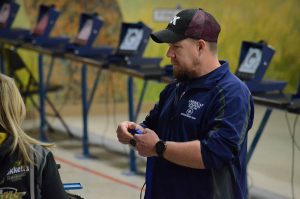
Matt Muzik, with the help of others, formed the American Legion Post 295 Marksmanship Team in June 2020.
His green American Legion program has been, to say the least, thriving in the area – so much so that he even has a waiting list of kids, with 40 individuals trying out for the single open spot available this year.
“Starting this program from scratch was very difficult,” Muzik admitted.
Challenges along the way for Muzik included setting up bi-laws, something he wish he had an understanding of prior to setting up the team and instituting a training plan to ensure an effective program – along with the usual trials and tribulations brought on with anything new.
“I’ve been able to keep the team growing by growing myself and challenging myself and the athletes each and every day,” he admitted.

Muzik was able to incorporate fundraising efforts that equipped his team with gear, rifles and electronic targets.
A piece of advice Muzik has is to make a cost sheet on all the required equipment needed to be productive and to have a strategic plan to obtain it. He also says it’s important to learn where matches are located and to come up with a program that can put interested athletes on a positive path toward college.
Muzik went on to say he owes a lot of thanks to Diane and Gregg Rice, CMP’s Indiana State Directors, who have their own marksmanship program, The X Count. The duo, who met Muzik through a match at The X Count and at several other events since, were instrumental in assisting the American Legion Post 295 team with finding gear and funding to get off the ground and even donated their used equipment.

One of the most important resources a start-up can have is talking with others who have already gone through the same process.
“I sat down with them (Diane and Gregg) multiple times to discuss starting a team and the things needed to be successful,” Muzik said. “Any team looking to start up, there is a lot of experienced teams that will help you be successful to grow this sport.”
With a reputation of aiding teams from all over the country in getting their programs started, Diane Rice and The X Count know the tips and tools that work – and sharing her knowledge with others has become a great gratification in her coaching career.
“It is one of the very rewarding things that we do and one of the best ways we can grow the sport,” she said.

“Always strive to be better. Never stop learning,” said Diane Rice of The X Count.
In the past, Rice has stressed the importance of fundraising for starter teams, saying it is critically important to their progress. She says it’s important to know your market – that is, realize what goes best with your target patrons.
“Funding is one of the biggest things people struggle with,” Rice said. “There are some fundamental principles that can be followed, but, more importantly, know that every community is different. You have to know the characteristics of your audience to be successful at raising funds.”
She added, “Your mindset is critical as well. Adopt an abundance rather than a scarcity mindset.”
Muzik has been able to effectively incorporate fundraising efforts like beach matches, selling decals and t-shirts and asking local business for help – all of which have raised enough to outfit the entire team with gear and rifles. In fact, he did so well with business donations that he was able to buy six electronic targets for his team’s use.
Rice has also suggested getting creative and taking advantage of the knowledge that can be gained from talking to existing programs. Being open to learning from others who were once in the same position can be advantageous to both teams and the marksmanship community as a whole.
“There are many people out there who want to help,” Rice said. “There is a great deal of wealth in the world, and it is available to even your little new program. Most people think that if someone gives to another cause, it means they won’t give to them. On the contrary, the greatest predictor of future giving is past giving.”
Muzik and Rice have both suggested looking into larger organizations dedicated to supporting youth shooting sports through funding, endowments and programs like Friends of the NRA, the MidwayUSA Foundation and, of course, the CMP.

“I enjoy watching these kids grow and mature as athletes and as young adults,” Muzik said.
The CMP’s State Director program in particular was designed to enhance youth marksmanship around the country and exists to give others a place to start when forming a new team. There are many others like Rice open to discussion on how to begin the conversation and are happy to aid those ready to make the commitment. Contact and other information on each state’s director can be found on the CMP website at https://thecmp.org/training-tech/state-director/.
“Talk to everyone – think long term and short term,” Rice said. “Always strive to be better. Never stop learning.”
CMP Guide to Forming a CMP Marksmanship Club
Visit the CMP’s website at https://thecmp.org/clubs/a-guide-on-forming-a-cmp-marksmanship-club/ to view step-by-step directions to form a marksmanship club. The CMP Guide is also available in a printed booklet and you can request a copy by emailing clubs@thecmp.org. If you have additional questions, please contact the CMP Club Affiliations Department at (419) 635-2141, ext. 753.
—
The Civilian Marksmanship Program is a federally chartered 501 (c) (3) non-profit corporation. It is dedicated to firearm safety and marksmanship training and to the promotion of marksmanship competition for citizens of the United States. For more information about the CMP and its programs, log onto www.TheCMP.org.
Category: Airgun, Clubs & Teams, CMP, Events, Miscellaneous, Olympics & USA, precision shooting, Rifle, Tips For Shooters |
No Comments »
Tags: 2 gun, 3 gun, american legion post 295, camp perry, cfda, civilian marksmanship program, claudia muzik, cmp, competitive shooting, competitive shooting programs, diane rice, Foundation, greg rice, idpa, jr shooter, jr shooters, junior, junior camps, junior shooter, junior shooters, junior shooting camps, junior writers, juniors, kids, learn to shoot, learning to shoot, matt muzik, Olympics, plinking, rimfire challenge, SASP, sass, Scholastic Action Shooting Program junior shooter, scholastic clay target program, sctp, shooting, shooting sports, SSSF, steel challenge, usa shooting, USPSA, youth shooting, youth shooting sports



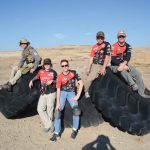
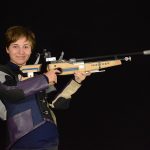
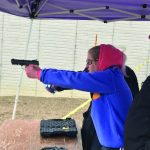
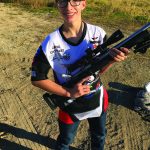

























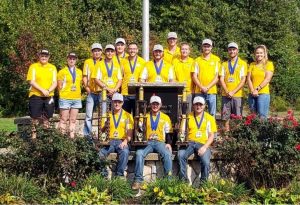





 ANNISTON, Ala. – Registration is now open for the Civilian Marksmanship Program’s (CMP) 12th annual Dixie Double Air Rifle and Air Pistol Competition, set to fire Nov. 4-6, 2021, at the South Competition Center in Alabama.
ANNISTON, Ala. – Registration is now open for the Civilian Marksmanship Program’s (CMP) 12th annual Dixie Double Air Rifle and Air Pistol Competition, set to fire Nov. 4-6, 2021, at the South Competition Center in Alabama.





 The Scholastic Action Shooting Program (SASP) has Olympic athletes in their ranks, ready to perform on the world stage in Tokyo. With their newly established international disciplines, SASP athletes saw podium finishes at the recent 2021 Air Pistol Junior Olympic National Championship before putting on incredible performances at the 2021 SASP National Championship.
The Scholastic Action Shooting Program (SASP) has Olympic athletes in their ranks, ready to perform on the world stage in Tokyo. With their newly established international disciplines, SASP athletes saw podium finishes at the recent 2021 Air Pistol Junior Olympic National Championship before putting on incredible performances at the 2021 SASP National Championship. Also poised to represent the USA at the Olympics are current SASP athletes, Jackson Leverett and Henry Leverett who will be competing in the Men’s 25m Rapid Fire Pistol event. Currently sophomores of the Ohio State University Pistol Team, the Leverett brothers have set a 5-year streak of winning gold at the Pistol National Junior Olympic Championships. Prior to joining the pistol team at Ohio, Leveretts set four USA Shooting national records in junior men’s Rapid Fire and junior men’s Sport Pistol. Henry won the U.S. Olympic Rapid Fire quota spot for the Tokyo 2020 Olympics after placing 5th in the 2019 World Cup Bejing, while Jackson helped Team USA win gold medals in Air Pistol and Rapid Fire in the 2018 Championship of the Americas. As current SASP athletes, both Jackson and Henry are SSSF College All Americans, having secured their spots on the 1st teams for international air, sport, and standard pistol.
Also poised to represent the USA at the Olympics are current SASP athletes, Jackson Leverett and Henry Leverett who will be competing in the Men’s 25m Rapid Fire Pistol event. Currently sophomores of the Ohio State University Pistol Team, the Leverett brothers have set a 5-year streak of winning gold at the Pistol National Junior Olympic Championships. Prior to joining the pistol team at Ohio, Leveretts set four USA Shooting national records in junior men’s Rapid Fire and junior men’s Sport Pistol. Henry won the U.S. Olympic Rapid Fire quota spot for the Tokyo 2020 Olympics after placing 5th in the 2019 World Cup Bejing, while Jackson helped Team USA win gold medals in Air Pistol and Rapid Fire in the 2018 Championship of the Americas. As current SASP athletes, both Jackson and Henry are SSSF College All Americans, having secured their spots on the 1st teams for international air, sport, and standard pistol.










